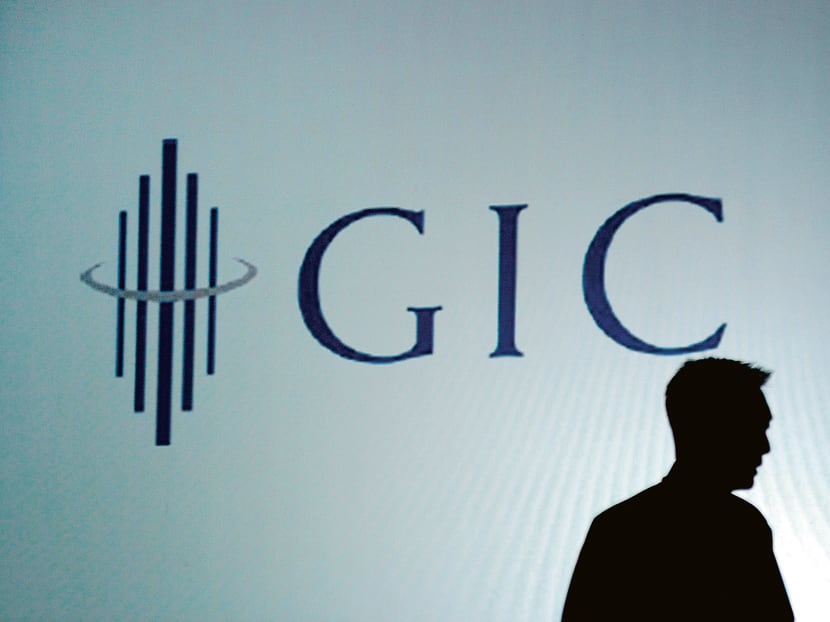GIC's returns fall for third year running, portfolio mix shifting to tech sector
SINGAPORE — Singapore's sovereign wealth fund manager saw lower returns for the third year in a row. The Government of Singapore Investment Corporation (GIC) posted an annualised real rate of return of 3.4 per cent over a 20-year period that ended March 31 this year, which also marked its lowest return since 2009.
SINGAPORE — Singapore's sovereign wealth fund manager saw lower returns for the third year in a row. The Government of Singapore Investment Corporation (GIC) posted an annualised real rate of return of 3.4 per cent over a 20-year period that ended March 31 this year, which also marked its lowest return since 2009.
The real return from the last financial year was at 3.7 per cent, and 4 per cent in the one before that.
GIC's chief executive officer Lim Chow Kiat said at a media briefing on Thursday (July 12) that the reason for the decline is because the high returns during the tech-bubble period of the late 1990s, which is the start of the 20-year window, had dropped out, while the declines seen during the period after the tech bubble still remained within the window.
The 20-year annualised real rate of return for this reporting year measures the average return of GIC's total portfolio from April 1998 to March 2018.
GIC manages Singapore's foreign reserves and has investments in more than 40 countries, with 13 per cent of its portfolio invested in Japan.
When asked whether GIC foresees the 20-year annualised real rate of return to fall below 3 per cent going forward, Mr Lim said that he is unable to "predict a yearly number".
However, he added that the investment firm will "make sure that its portfolio is robust and diversified".
GIC's group chief investment officer, Dr Jeffrey Jaensubhakij, said: "It really isn't that recent returns have been poorer, but that the best returns are dropping out from 20 years ago."
The five-year nominal return for this financial year came in at 6.6 per cent, compared with a 5.1 per cent nominal return in the previous year. Unlike the real rate of return, nominal returns do not account for adjustments in price changes due to global inflation.
Despite the improving performance of recent returns, GIC continues maintaining a cautious stance as it expects the environment to be challenging with high asset valuations, tightening monetary policy and mounting trade tensions.
Mr Lim said: "The escalating trade friction is a big concern. If it leads to more disruption of supply chains, more difficulties with inflation, this could cause a serious impact on financial markets. Certainly as a global investor, we wish not to see that happen. This is something we will monitor."
As it is, GIC has "maintained a more cautious stance" over the last two to three years, he added. "Even if the frictions escalate further, I would expect our portfolio to hold up relatively well."
SHIFTS IN ASSET MIX, FOCUS ON TECHNOLOGY
In terms of asset mix, developed market equities made up 23 per cent of GIC's total portfolio, down from 27 per cent the year before.
Nominal cash and bonds took up a higher proportion of total assets, from 35 per cent in the last financial year to 37 per cent.
The proportion is higher than the GIC's policy portfolio which aims to have between 25 and 30 per cent of its total portfolio in nominal cash and bonds.
Mr Lim said that the shifts in the asset mix is a reflection of GIC's "more cautious stance." "We reduce equity, so that has to go somewhere. So we go to a lower-risk asset class."
He added that GIC wants to specially focus on technology because the changes brought about by technological changes in the last few years are so pervasive.
"In the past, start-ups tried to sell things to incumbents. They invent something, come up with new services and products and sell them to the incumbents. This time round, they are not just doing that, they want to take over and disrupt incumbents and whole industries," he said.
GIC declined to reveal the percentage of their investments that went into the technology sector.
Dr Jaensubhakij said that it is increasingly harder to define the technology sector as it is affecting more sectors.
"Our approach has been that as companies and industries or sectors have to use tech, we want to invest in companies that use it well. There are traditional companies in traditional sectors, but they are changing what they are doing by using them well," he said.
He added that the investment firm is looking at how companies utilise technology increasingly as a differentiating factor when deciding whether to buy one company over another.









